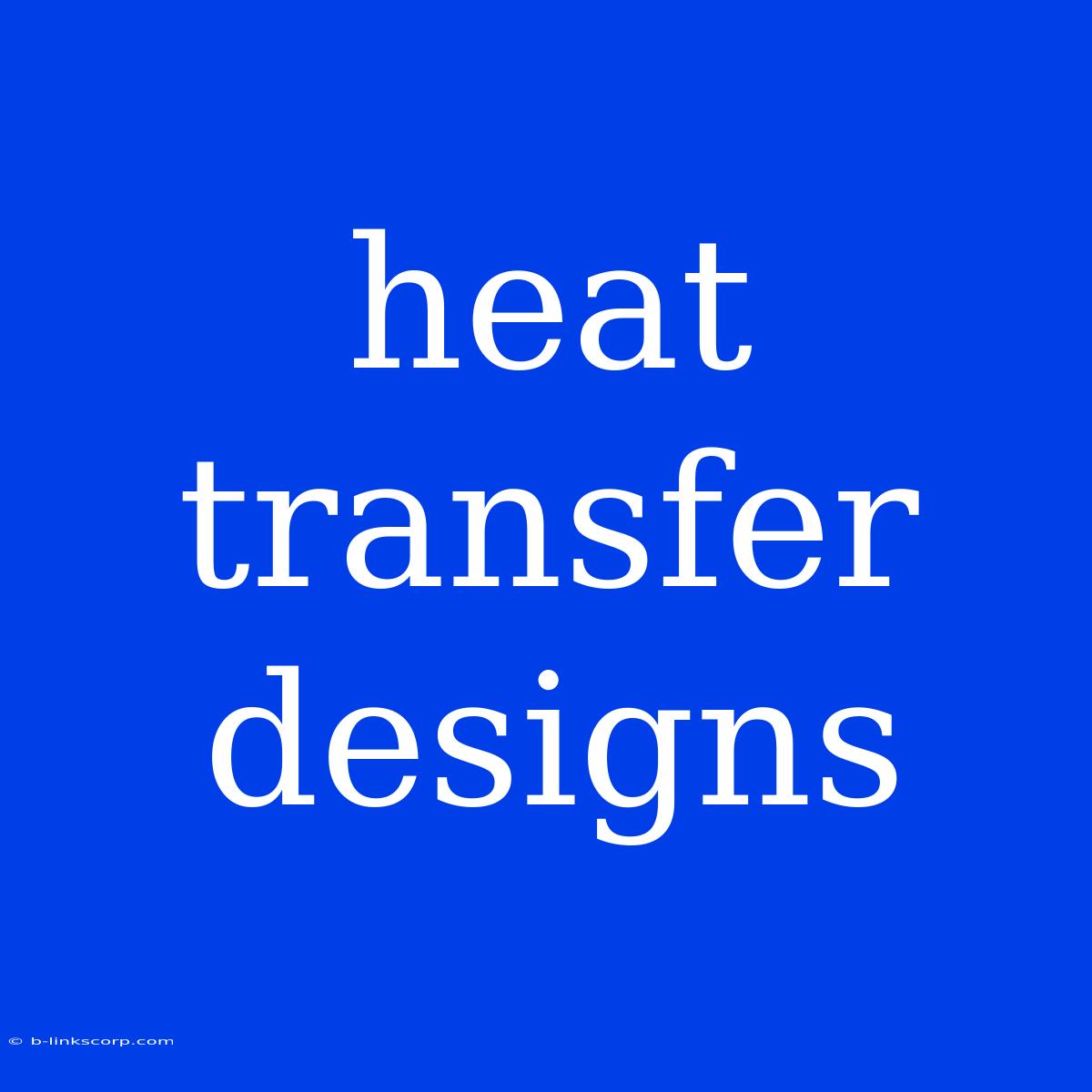Heat Transfer Designs: Optimizing Thermal Performance
Heat transfer is a fundamental process in many engineering applications, ranging from power generation and electronics cooling to chemical processing and aerospace. Efficient heat transfer designs are crucial for optimizing performance, reducing energy consumption, and extending the lifespan of systems. This article explores key concepts and design considerations in heat transfer, focusing on various methods and strategies to enhance thermal performance.
Understanding Heat Transfer Mechanisms
Heat transfer occurs through three primary mechanisms:
1. Conduction: Heat transfer through direct contact between molecules in a material. Materials with higher thermal conductivity transfer heat more efficiently. Examples include metals, ceramics, and diamonds.
2. Convection: Heat transfer through the movement of fluids. This process can be natural (driven by density differences) or forced (driven by external forces, like fans or pumps).
3. Radiation: Heat transfer through electromagnetic waves. This process does not require a medium and is the primary mode of heat transfer in space.
Enhancing Heat Transfer Designs
Efficient heat transfer designs often involve combining various techniques to maximize heat dissipation and minimize thermal resistance. Here are some key design considerations:
1. Material Selection: * Thermal Conductivity: Choose materials with high thermal conductivity for heat sinks, heat exchangers, and other components where efficient heat dissipation is crucial. * Specific Heat Capacity: Materials with high specific heat capacity can absorb significant amounts of heat without experiencing large temperature changes.
2. Surface Area: * Finned Surfaces: Increasing the surface area of heat exchangers or heat sinks using fins can significantly enhance heat transfer. * Extended Surfaces: Adding extended surfaces (like pins or plates) can increase the contact area between a heated surface and the cooling medium.
3. Fluid Flow: * Turbulent Flow: Turbulent flow promotes better mixing and heat transfer compared to laminar flow. Design features like baffles, swirl inserts, and roughened surfaces can enhance turbulence. * Forced Convection: Utilizing fans or pumps to increase the fluid velocity can significantly improve heat transfer rates.
4. Heat Transfer Enhancement Techniques: * Nanofluids: Dispersing nanoparticles in fluids can enhance their thermal conductivity and heat transfer properties. * Phase Change Materials (PCMs): PCMs absorb and release heat during phase transitions, providing a buffer for temperature fluctuations. * Boiling and Condensation: Utilizing phase change mechanisms like boiling and condensation can significantly increase heat transfer rates.
5. Computational Fluid Dynamics (CFD): * CFD simulations can help visualize and analyze fluid flow patterns, predict heat transfer rates, and optimize design parameters for enhanced thermal performance.
Examples of Heat Transfer Designs
- Heat Sinks: Designed to dissipate heat from electronic components, often using fins or extended surfaces to increase surface area.
- Heat Exchangers: Used in various applications, like power plants and HVAC systems, to transfer heat between two fluids.
- Cooling Towers: Used in large-scale industrial applications to cool water through evaporation.
- Solar Thermal Collectors: Designed to absorb solar energy and transfer it to a working fluid for heating applications.
Conclusion
Understanding heat transfer mechanisms and implementing effective design strategies are crucial for optimizing thermal performance in diverse engineering applications. By carefully selecting materials, enhancing surface area, promoting fluid flow, and leveraging advanced techniques like CFD and nanofluids, engineers can create efficient and effective heat transfer designs for improved system performance, reduced energy consumption, and extended lifespan.

